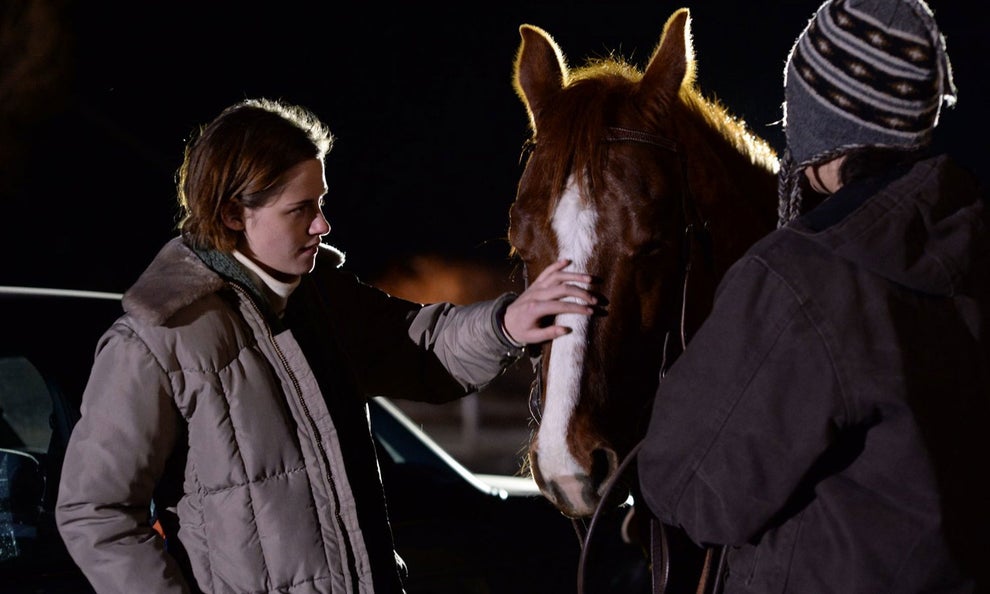
1. Aquarius
Movies starring older women have become a quiet box office phenomenon, the likes of Lily Tomlin, Sally Field, and Blythe Danner attracting female-skewing audiences eager to see stories about life over 60. But, with all due respect to those august ladies, they’ve got nothing on Sonia Braga in Kleber Mendonça Filho’s vivid (if a little too sprawling) Brazilian movie Aquarius.
Braga, at 66, is vibrant, sensual, and so very compelling as Clara, a retired music journalist living alone in a gorgeous art deco apartment building being targeted by developers. As the life she’s carved out for herself is threatened, Clara only seems to take firmer hold of it, fighting back against attempts to bully her out of her home and blooming under the pressure. When the shady investors hold a raucous shindig in the empty apartment above hers, she responds by blasting Queen’s “Fat Bottomed Girls,” an act of rebellion that segues into a party of one, a portrait of a woman enjoying the glorious, hard-earned certainty she has in her own identity.
How to see it: Aquarius is now playing in limited release — check out a list of theaters here.
2. Certain Women
There are three parts to Kelly Reichardt’s Certain Women, all set in Montana, each focused on a different female character looking for connection in a small town. There’s the barest bit of overlap between them, but for the most part, the sections exist in their own constrained orbits, adaptations of Maile Meloy short stories turned into slender, subdued segments — a little too subdued, in the case of the first two, which feel dwarfed by the expansive horizons against which they’re set. Laura Dern is a lawyer with a difficult client, while returning Reichardt collaborator Michelle Williams plays a mother and wife who negotiates to buy a pile of sandstone for her house, a sequence in which the dramatic rise and fall is almost imperceptible.
But then there’s the third part, about how a lonesome ranch hand named Jamie (Lily Gladstone) stumbles into a night-school law class being taught by Beth (Kristen Stewart), who lives four hours away and has to make the dangerous drive home each night. Jamie isn’t a law student, but she starts attending anyway, getting into a routine of escorting Beth to the diner afterward, listening to her talk, and yearning for something more from the relationship. It’s a story about longing and loneliness that’s sad, sweet, and perfect — and while Stewart continues her fascinating run of indie films, it’s the newcomer Gladstone you remember. She funnels those swelling emotions into a few terse words.
How to see it: Certain Women is now playing in limited release — click on “Watch Now” here to see a list of theaters.
3. The Handmaiden
The Handmaiden is a movie made of contradictions. It’s about an elaborate scheme to defraud an heiress named Hideko (Kim Min-hee) with the help of a thief named Sook-hee (Kim Tae-ri) who poses as her new maid, though who the target is and who’s being taken advantage of soon becomes unclear, the con crumbling in the face of an unexpected romance. It’s set in Korea, but it’s a Korea under occupation in the 1930s with many of its characters affecting Japanese-ness as a sign of social status. It’s almost entirely staged inside a Frankensteined manor that’s done in half British architecture and half Japanese — a giant, conflicted monument to colonialism. And it’s a film fueled by the degree to which its women are underestimated and objectified by men, only it features some of the male-gaziest lesbian sex scenes imaginable.
Well, no one goes to the director of Oldboy expecting restraint. Park Chan-wook has ported Sarah Waters’ Victorian England–set novel Fingersmith halfway around the world and adapted it into an opulent, twisted, overheated gothic drama. But, thanks to its strong lead performances, The Haindmaiden is also an irresistible love story about two women who find themselves genuinely seen and appreciated for the first time — by each other.
How to see it: The Handmaiden is now playing in limited release — check out a list of theaters here.
4. I Am the Pretty Thing That Lives in the House
A horror movie guaranteed to drive many a horror fan wild with frustration, I Am the Pretty Thing That Lives in the House is, fair warning, an exercise in building dread, but not one intent on delivering a big payoff. In fact, Lily (Ruth Wilson), the main character and often the only figure onscreen, tells the audience how the movie’s going to end right at the start, murmuring in voiceover that she’s a 28-year-old live-in hospice nurse, and that she won’t live to see 29. She’s been hired to take care of a mentally and physically deteriorating, once-famous author named Iris Blum (Paula Prentiss) who insists on calling her “Polly.” The two are alone in the house, except when they’re joined by a ghost.
It’s not a slow burn so much as a bunch of glowing embers, but if you can reconcile yourself to director Oz Perkins’ pace, I Am the Pretty Thing That Lives in the House turns out to be almost unbearably creepy on atmospherics alone. It uses space with remarkable artistry — dark doorways hold potential horrors, empty parts of the frame become places where mysterious things can lurk, and characters facing away from the camera seem terrifyingly exposed. Lily, who scolds herself for her fear in antiquated language (“Silly billy,” she mutters), is like a figure out of a Shirley Jackson novel, but then Iris, in a lovely touch, is inspired by Shirley Jackson herself, character and creator trapped together in a nightmarish meditation on death.
How to see it: I Am the Pretty Thing That Lives in the House is streaming on Netflix.
5. Fire at Sea
Fire at Sea is a documentary about the refugee crisis in Europe that sidles up sideways to a mammoth, urgent topic. Rather than attempt to make a film focused on the ongoing humanitarian emergency itself, trotting out charts and talking heads, director Gianfranco Rosi looks at a place — Lampedusa, an Italian island of about 6,000 residents. Due to its location, closer to Tunisia than to Siciliy, Lampedusa has become a hoped-for entry point for migrants making the journey by boat across the Mediterranean to Europe. In the opening title cards, the only time the movie prioritizes figures over people, we’re told that 400,000 refugees have landed on the island in the past two decades, and that an estimated 15,000 have died making the journey.
Those are sizable numbers, but Fire at Sea shows how even thousands of deaths can become part of a day-to-day. It divides its time between the coast guard rescue operations, where men, women, children, and corpses are pulled off overcrowded, dilapidated vessels; the detention centers; and the lives of two locals. There’s Samuele Pucillo, a 12-year-old kid from a fishing family who weathers schoolwork, plays with a slingshot, and tries out boating. And there’s Pietro Bartolo, a doctor who treats the community and cares for the stream of migrants arriving on the island’s shore, or dying in the process. Far from normalizing the crisis, the contrast between Samuele’s boyhood and the sung-spoken story of desperation delivered by a Nigerian man who came off a boat (“We drank our piss to survive,” he belts) highlights what it means to be a refugee — that your world can be ending, but that there’s still normalcy, sometimes not so many miles away. It could be yours, if you’re not killed on the way — and if, once you get there, you’re allowed to stay.
How to see it: Fire at Sea is now playing in limited release — check out a list of theaters here.
6. We Are X
X Japan rose to fame in the late ’80s and early ’90s on the basis of their outrageous glam stylings and their surprisingly hard-charging metal music, ushering in an era of bombastic, rebellious rock music in their home country of Japan. They played to arenas of adoring fans and sold millions of albums, and then they lost one member to a disagreement, and then another to a cult, and then a third to suicide. When We Are X picks up, the band has reformed after years apart, rebuilding relationships, bringing in new members, trying to heal old wounds, and touring the world (the documentary picks up as they prep for a show at Madison Square Garden).
Directed by Stephen Kijak, We Are X filters the dark history of X Japan through the experiences of co-founder Yoshiki, a man with a dramatic streak, a tragic background, and a history of drumming so hard that he passes out on stage. He’s a complicated interview, forthcoming on some tender topics and unwilling to speak to others, spinning out a narrative that feels a bit larger than life, just like his band. We Are X may not get under its subject’s skin, but it makes the case for the group not just as Japanese superstars attempting to cross over into global fame, but as embodiments of the spirit of rock, with all of its grandeur and the sacrifices it demands.
How to see it: We Are X is now playing in limited release — check out a list of theaters here.







